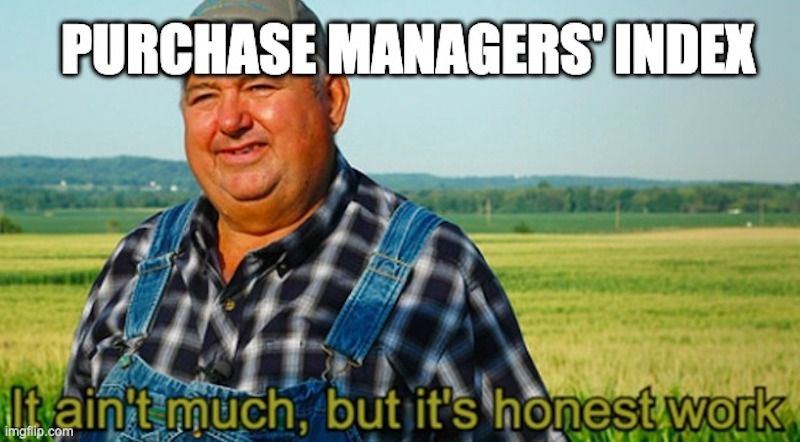Purchase Managers Index

Alright, I'm going to admit I've been following the Institute for Supply Management Purchase Managers' Index for the past 10+ years without really understanding what it means. Let's dive deep together:
New ISM PMI print came out for April today, and it was well below economists' expectations. Ongoing economic deceleration. https://t.co/qm57v3Kk2b pic.twitter.com/dgwAlIGvPY
— Lyn Alden (@LynAldenContact) May 2, 2022
The PMI is a monthly indicator of economic activity based on a survey of purchasing managers at 300+ manufacturing firms. The PMI is a composite of the following categories with equal weights : New Orders, Production, Employment, Supplier Deliveries and Inventories.
For each category, respondents have the following answer options: higher, no change, or lower with the following weights. Therefore, index values of 50+ = expansion, 50 = no change, and lower than 50 = contraction.
One thing to note is that, the answers are weighted by the share of U.S. Gross Domestic Product in each industry using North American Industry Classification System (NAICS) to be more representative of the economy.
A couple of other things to note. The membership to the ISM is voluntary. Therefore, there is no guarantee that firms surveyed are actually representative of the activity of all manufacturing firms. Furthermore, the magnitudes of changes are not taken into account in the survey.
The PMI provides a glimpse into the health of the economy but it is a very blunt measurement. I humbly suggest we always use the index in conjunction with other data points for sound judgement.
And this was my 8th post for @ship30for30!